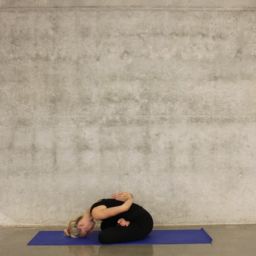Most strength trainees routinely choose bilateral exercises. These exercises have several advantages although unilateral exercises are the great forgotten.
If you don’t already know Fitenium is a free, mobile and video-based social network for users who train strength and/or body weight exercises. At Fitenium users can find free personalized routines, follow their performance, compete and get discounts at nutrition stores and sports equipment. Download it here.
This article describes the benefits of unilateral training and why you can include it in your routine, without excluding bilateral exercises.
One-sided and two-sided exercise
The one-sided exercise involves working on one side of the body, regardless of the upper or lower extremities. These would be some examples of unilateral exercises:
- Upper extremities: one hand bench press, one hand shoulder press, one hand push-up, etc.
- Lower extremities: single leg squat, single leg deadlift, etc.
As you can imagine, the bilateral exercises in this case are exercises that are performed with both hands or legs. Bilateral exercises are performed on both sides at the same time: regular barbell bench press, regular front or back squat, regular traditional deadlift, etc.)

Published on Unplash by Devaiah Mallangada Kalaiah
Despite the benefits of unilateral exercise, bilateral exercise is most often used in strength training. This is not why you should put aside unilateral work.
Let’s see why you could add unilateral training to our routine.
Increased basic work and improved stability
The core makes up a large number of muscles throughout the entire central body area.
These include the rectus abdominis muscle, internal oblique muscle, external oblique muscle, transverse abdominis muscle, quadriceps femoris, pelvic floor, latissimus dorsi, sacrum, erector spinae, polyfisural muscle, gluteals, and others.
These muscles stabilize the body, protect the spine, and perform or prevent movement, so they need to be trained for this function.
The important thing is that whether you use dumbbells, elastic bands, pulleys, or your own weight (such as a one-legged squat), do the exercise on one side only to improve stability.

Published on Unplash by Nessa Chance
During the execution of the unilateral movement, this transversal resistance tends to unbalance us, which forces us to mobilize the core muscles (central zone) keeping us stable.
Exercising one side increases activation of the central nerve muscles and increases stabilization work.
This has been proven in several studies showing that single exercise results in greater central neuromuscular activation and greater stabilization work.
Using guided machines eliminates a lot of stabilization (core) work. So unilateral exercises are beneficial as they reduce imbalances between the limbs, correct bilateral disorders and improve performance.
Whether it is strength or hypertrophy (increased muscle mass), unilateral exercise has the advantage of reducing muscle imbalance (body asymmetry) between the limbs.

Published on Unplash by Luis Vidal
When performing bilateral exercises (squats, bench press, etc.), it is very normal for the strong members to do more work than the weak ones, which can cause imbalances.
Exclusive continuous training between the two muscle groups is not intended to reduce or correct it. However, when training on one side, each side or limb works independently and does the job it needs to do.
Science has proven these benefits and there is a lot of research on them. For example, a recent study of young basketball players published in 2017 reported that unilateral training elicited much better performance than bilateral training in several ways.
Particularly for this study, the greatest benefits of unilateral training were to reduce interlimb imbalances, correct bilateral deficits, and improve performance (in this case, maximum foot deviation and output).
Improving the Opposite Side: The Phenomenon of “Cross-Education”
The term contralateral refers to the opposite side of the body or the other half (belongs to or is against the other side).
Speaking of training, the increase in strength of a limb after training the opposite muscle (training one limb increases the strength of the other untrained limb) has been extensively documented for many years.
This phenomenon is called “cross training” and is also called the “contralateral strength training effect,” “cross transfer,” and “cross training.”
Unilateral strength training induces a moderate to large increase in strength in the untrained limbs on the other side.
In recent years, the growing interest in training on the other side (especially in clinical settings) has led to an exponential increase in the number of articles focusing on “petuage-education”.
The purpose of the recent meta-analysis, published this year in 2017, is to review current findings on unilateral resistance training and determine the overall magnitude of strength improvement on the other side.
For now, the data confirm the existence of a strength “peculiar education” effect, with unilateral strength training moderately to significantly increasing the strength of the untrained limbs on the opposite side of the healthy subject. In particular, an effect of “mutual education” was revealed, which averaged an increase of +11.9%. More specifically, this meta-analysis reported that unilateral training results in an average improvement of +9.4% in the untrained upper extremities and +16.4% in the untrained lower extremities.
Regarding the effect of the type of training on the magnitude of the force of the “cross education”, the eccentric contraction offers the greatest benefit on the opposite side (+ 17.7%), followed by the concentric + eccentric contraction (+ 15 .9%) and concentric contraction (+ 11.3%).
Accumulation of future high-quality research conducted not only in healthy subjects, but especially in clinical populations, is very important to quantify the effect of “mutual education” and the true magnitude of this effect. Especially for the possible practical implications for athletes and rehabilitation.
Should I only do unilateral training?
Unilateral training has been confirmed to have many benefits (such as improved stability and core engagement, reduced imbalance between limbs, and improved aspects of performance) that should be included in the training routine.
In any case it is not necessary to stop bilateral training. Unilateral training is one more resource when it comes to increasing our strength and muscle mass.
This means that you can include both types of training in your training routines. Both have their advantages and each is better for a purpose.
Once you’ve mastered the bilateral exercises, moving on to the unilateral exercises is a great option. Choose the one you like the most, but keep in mind to do both.

















